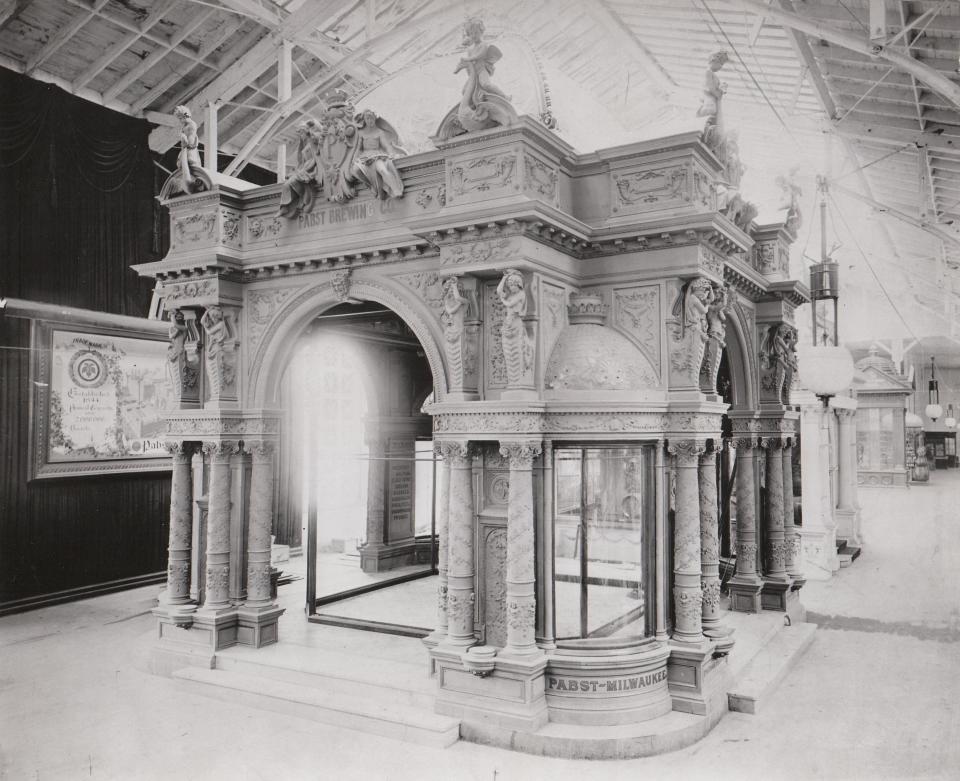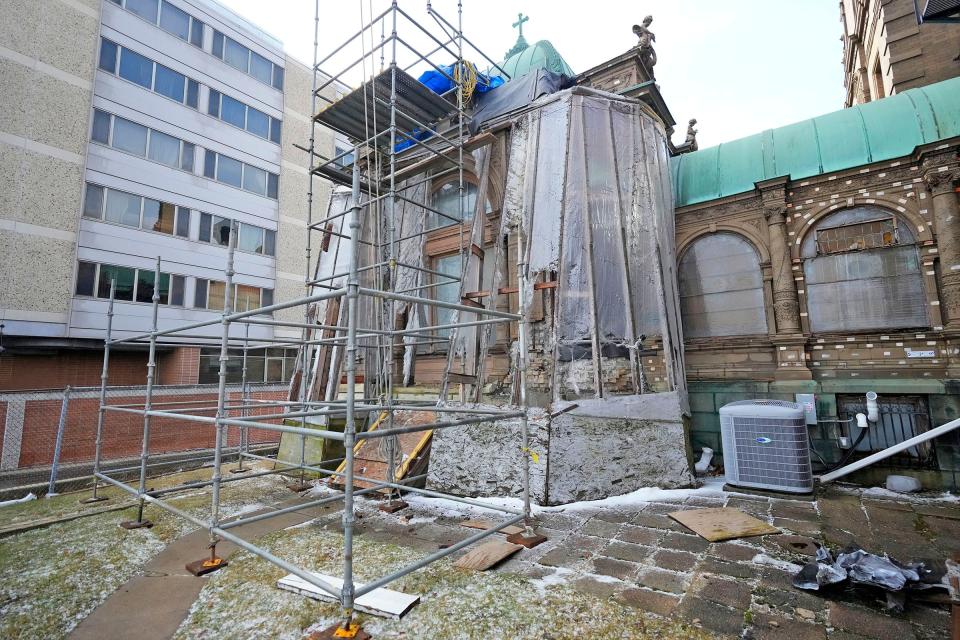Part of Milwaukee's Pabst Mansion is deteriorating. Its owner wants to dismantle and rebuild it.
A key portion of Milwaukee's historic Pabst Mansion that's falling apart would be dismantled, with parts of it preserved for an eventual reconstruction, under a new proposal seeking approval from city officials.
At issue is the mansion's pavilion, which was added in 1895 − three years after beer baron Frederick Pabst completed his home on Milwaukee's near west side.
Pabst Mansion Inc., the nonprofit which now operates the mansion as a historic attraction, wants to deconstruct the pavilion and preserve its salvageable elements to help with rebuilding it as a freestanding porch − its earlier use.
That plan needs Historic Preservation Commission approval because the mansion, 2000 W. Wisconsin Ave., is designated by the city as a historic site. The proposal is to be considered at the commission's May 1 meeting.
The pavilion, which once housed the mansion’s gift shop and main entrance, has been closed to the public since summer 2022 due to safety concerns.
The pavilion's condition "was a huge liability" for the mansion, which hosts 40,000 guests annually, said Mame McCully, interim executive director of Pabst Mansion Inc.
The mansion shifted its visitors center from the pavilion to space it leases on the ground floor of The Marq, a neighboring student apartment building at 2040 W. Wisconsin Ave.
Advanced technology will help restore the pavilion, which includes several stained glass windows as well as decorative terra cotta elements, museum officials said.
Plan calls for elements to be salvaged, rebuilt
The organization plans to carefully deconstruct the pavilion's salvageable elements for scanning, documentation and preservation until it can be rebuilt, McCully said.
Pabst Mansion Inc. is working with the University of Wisconsin-Milwaukee’s Historic Preservation Institute to create a 3D scan of the pavilion, using laser scanning tools and recording techniques.
That scan will make it possible to use 3D printing technology to recast missing and deteriorated pieces.
Museum officials believe roughly 25% of the original structure remains viable. But there's a lot they don't know about its condition until deconstruction occurs, McCully said.
The reconstructed pavilion will include a proper back-up structure, movement joints, weather proofing and insulation.

It was built as a temporary interior structure, the Pabst Brewing Co. pavilion, for the World's Columbian Exposition of 1893 in Chicago.
That's the massive event where Pabst beer won a well-publicized gold medal.
While blue ribbons had been tied to Pabst bottles starting in 1882, the words “Blue Ribbon” were first added to the label in 1895, according to a city report on the mansion's historic designation.
The pavilion was added to the Pabst Mansion's east end as an open porch.
Mansion served as archbishop's residence
It was later enclosed before being converted to a chapel in 1908 after the mansion was sold by the Pabst family to the Archdiocese of Milwaukee. It was used as the archbishop's residence until 1975, according to the Wisconsin Historical Society.
The pavilion was not constructed with appropriate materials or details, such as flashing and insulation, because it wasn't designed to be a permanent exterior structure.
"Where are the gutters? Where does the rain go?" McCully said while showing the pavilion on Thursday to a Milwaukee Journal Sentinel reporter and photographer.
The structure of the pavilion gradually fell into disrepair, McCully said, despite several stabilization efforts since the early 1980s.
"It has been a matter of how long can we keep it standing," she said.

Deconstruction would allow Pabst Mansion Inc. to preserve portions of the pavilion before it is lost, McCully said.
Meanwhile, the organization is developing estimates and a work plan for major investments in the mansion’s exterior and anticipates a fundraising campaign for those repairs − which also would need preservation commission approval.
Pabst Mansion Inc. would then turn its attention to reconstructing the pavilion as a porch, McCully said.
While preservation is the best outcome for any historic building, reconstruction can make sense "in certain situations when a historic property is totally gone or in extremely compromised condition," said Jeremy Ebersole, Milwaukee Preservation Alliance executive director.
"In such situations, we would encourage the reuse of as much historic material as possible and the in-kind replacement of anything else," Ebersole told the Journal Sentinel.
"In addition, we would hope that the reconstruction would take place as soon as possible and that a timeline for doing so would be placed on any (preservation commission) approval," he said.
Frederick Pabst built Pabst Brewing Co. into the nation's largest brewer by 1874. He died in 1904.
Pabst Brewing, now based in San Antonio, Texas, shut down its Milwaukee brewery in 1996. That complex on downtown's west side has since been converted into The Brewery, a mixed-use development that includes hotels, apartments, offices, restaurants and craft breweries.
Tom Daykin can be emailed at tdaykin@jrn.com and followed on Instagram, Twitter and Facebook.
Our subscribers make this reporting possible. Please consider supporting local journalism by subscribing to the Journal Sentinel at jsonline.com/deal.
DOWNLOAD THE APP: Get the latest news, sports and more
Subscribe to get the BusinessWatch email newsletter.
This article originally appeared on Milwaukee Journal Sentinel: Deteriorating portion of Pabst Mansion to be rebuilt under plan

